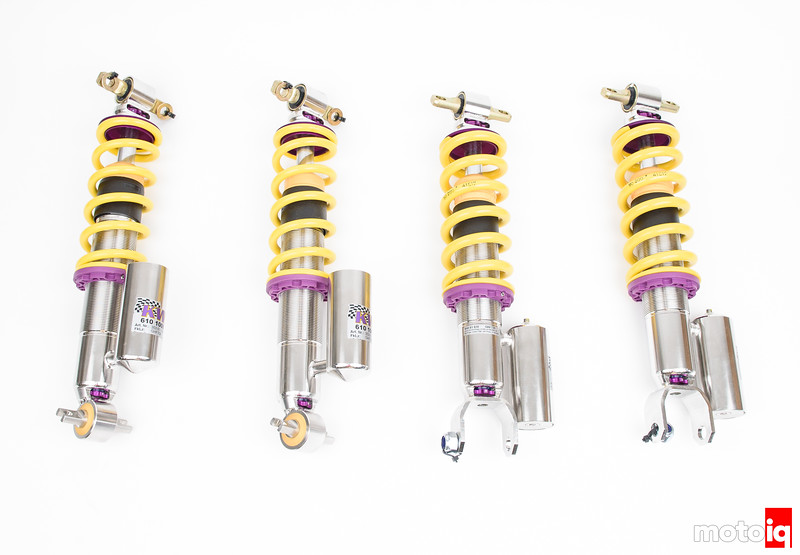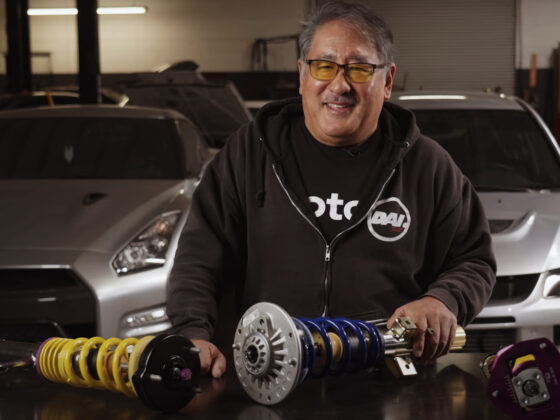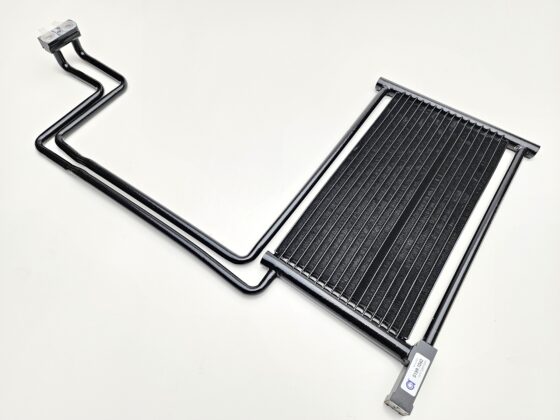More Rear Compression
Speeds rear rotation, will make the back of the car more sensitive to trail braking or lift throttle. Rotation of the chassis will start earlier in the turn and will come faster.
Reduces body roll
Reduces acceleration squat and the possible resulting light front feel.
Adds control on transitions, the back of the car can follow the front more directly
The back of the car follows the front better in all turns.
The back of the car takes large bumps well without bottoming.
Prevents bottoming in a drag launch
To Much Rear Compression
Tire Shock
Poor harsh uncomfortable ride
Car loses rear grip in general.
The rear of the car bobs, bounces and jiggles around losing traction, especially on throttle.
Poor grip on drag launches, the car just spins and blows off the tires, no bite.
No forward bite on a drift car.
Too Little Rear Compression
The rear of the car squats excessively under throttle input, this may make the front of the car feel light. If the car has IRS the negative camber might build up suddenly due to the squat and unexpectedly causing a loss of rear grip on the throttle.
The back of the car feels out of step with the front and lags behind steering input. This is especially annoying and sometimes even scary in transitions.
The back of the car blows through the travel and bottoms out harshly causing a loss of traction.
The car will squat and suddenly start to spin, even bottom out in a drag launch, this is especially notable in an IRS car due to negative camber gain and losing the contact patch.
A drift car will suddenly high-side and want to straighten up. This can cause a crash.
The car will feel like it’s falling over on itself in a turn. Like a house with a high roof.

Because it is so important, be sure you read and understand part one before messing with your two-way adjustable shocks! When making compression damping changes I suggest initially making slightly smaller steps than we did with the rebound when zeroing in on the best setting like 1 or 2 clicks at a time. This is so we can finely get your compression to the stiffest possible setting without hurting anything. If the changes feel good and you go faster, keep adding more until your lap times drop or the car feels bad and back off a click. Remember remember, the most compression and the least rebound are going to get the job done the best. In most cases, like the rebound damping, less compression damping is more, even though you want the most possible. Remember it is the most with no ill effects. Again, when making adjustments make sure you take a notepad and write down exactly what you are doing. With the 4 corners of a car, it’s easy to get confused about what you last did and that’s important in case you overdid it and have to go back.
If you haven’t yet, please go back and read part one of this series!
This guide can help you solve many handling issues with just some shock adjustments. I encourage you to go out on the track with your car and experiment. Adjusting your shocks wrong is not going to make it hurtle out of control so don’t be afraid to take some swings at it. Once you gain a good feel for what the adjustments do, you can apply this knowledge to different situations and different cars. Now go enjoy and go fast!




4 comments
Thank you for this and your previous article on adjusting shocks. Very helpful.
“But what about damping coefficient!” I’m waiting for some FSAE-traumatized person to chip in. 😉
No, good guide; a few nuances on a lot of these directions that I’d sort of thought about but not nearly as concretely as you laid it out, thank you for all this.
I hardly ever calculate that. Not even for developing a new application. It’s because 99% of the time I only have partial data to do so and I have to fill in some blanks by guessing. I think with experience it’s only minimally useful.
Honestly, makes sense. I feel like there’s far more value in being able to go “OK, the car is misbehaving in this way, what do I do to fix that?” and having a plan for what to do before the next session than in trying to refine some way to have a good guess with zero test data.
I have some spreadsheets where I took a platform I can fill in about all the numbers on (ie: Miata) and kind of back calculated some shock dyno data for setups that work through them to see if I could figure out why, and what their guys were thinking of to get there… but that’s more just an experiment rather than an attempt to have a practical thing.